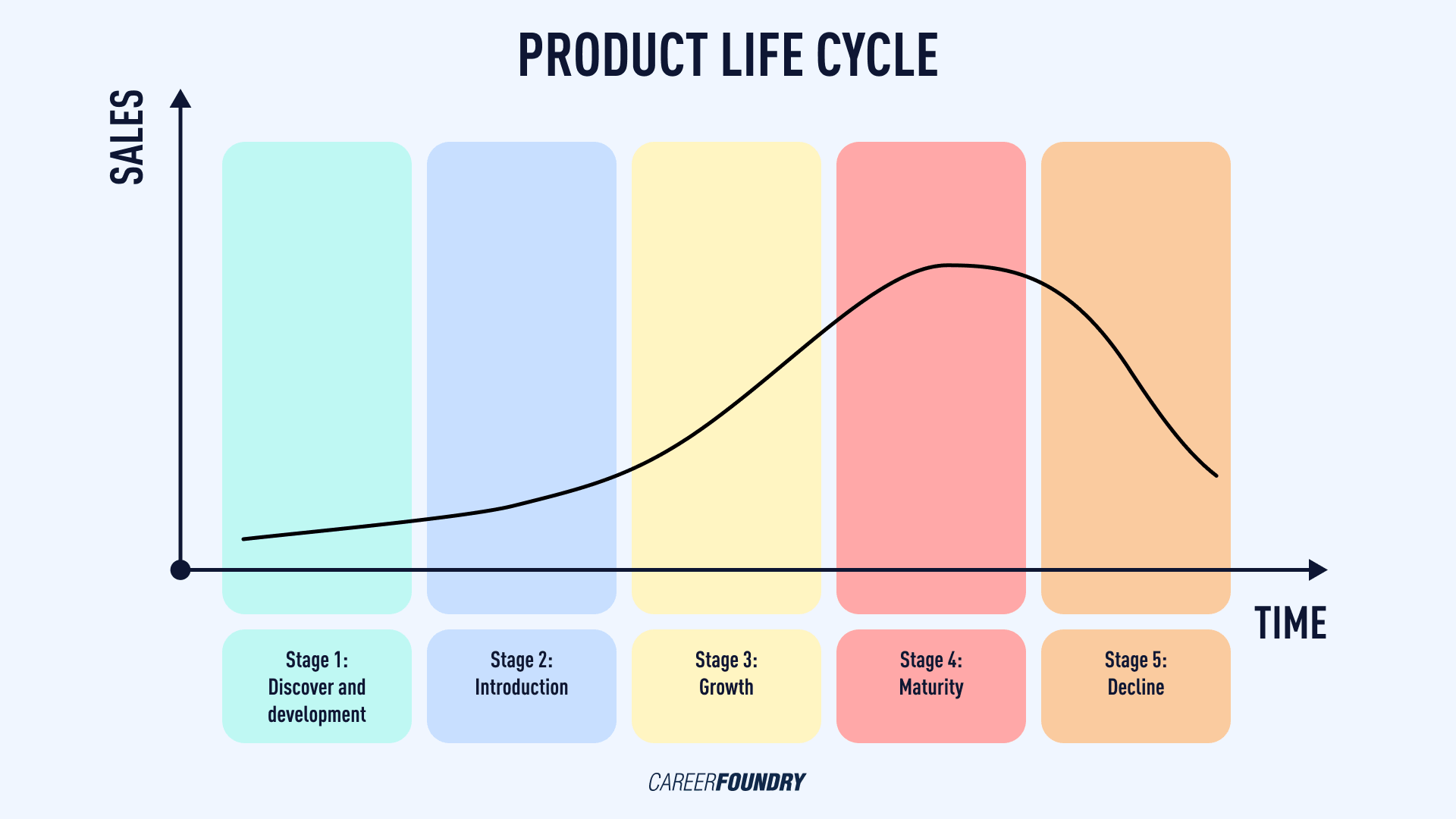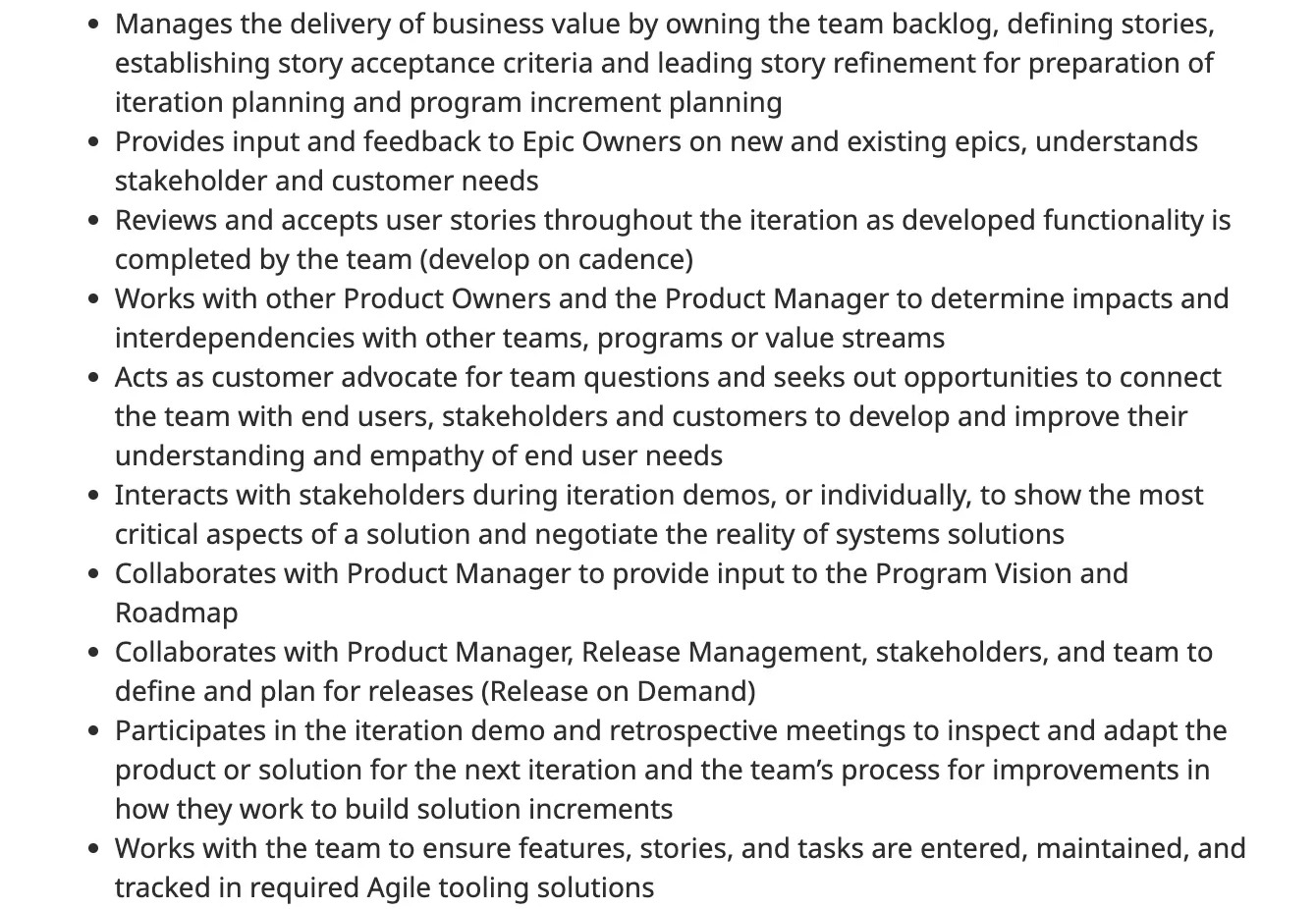What’s the difference between a product manager and a product owner? Is there a distinction to be made, or are these just two different titles for the same role? We explain all in this guide.
If you think about the work that goes into creating, building, and maintaining a successful product, there are many moving parts involved. It requires the expertise of different people along the way—from business stakeholders to designers, developers, marketers, and beyond.
And, of course, seamless collaboration is key. If all of these teams and experts operate as islands, it’s virtually impossible to work towards a common goal. To this end, dedicated product experts (like product managers and product owners) are there to tie it all together and keep everybody on the same page.
Both product managers and product owners have the goal of delivering successful products which drive business growth and satisfy the end user—but they’re not the same job. There are some clear distinctions to be made between the two, which we’ll explain throughout this post.
Here’s what we’ll cover:
- What’s the difference between a product manager and a product owner?
- What does a product manager do?
- What does a product owner do?
- Product manager vs. product owner job descriptions
- Who earns more, product managers or product owners?
- Product manager vs. product owner: The differences in summary
By the end, you’ll have a much clearer idea of how the product manager and product owner roles differ, as well as where they can overlap. Let’s go!
1. What’s the difference between a product manager and a product owner?
Both product managers and product owners are responsible for delivering successful products. However, they do this in different ways.
The product manager occupies a strategic role, defining the overall vision and direction for the product. They ensure that the right thing is being built in order to meet both end user and business needs.
The product owner makes sure that, on a day-to-day basis, the tasks being carried out and prioritized are in line with the strategy set out by the product manager.
Another key difference is that the product owner role only exists in the context of the Scrum framework, while the product manager role can exist in any company and working environment. We’ll explain what Scrum means in section three, where we look at the product owner role in more detail .
That’s a high-level distinction between the product manager and the product owner. Let’s drill down further to see how the two roles differ in terms of tasks and responsibilities—starting with those of the product manager.
2. What does a product manager do?
The role of the product manager is to guide a product through every stage of the product life cycle.
The product life cycle can be divided into five stages: Discovery and development, introduction to the market, growth, maturity, and decline:

You can learn more about the product life cycle in our introductory guide to product management.
The product manager is responsible for the overarching, big-picture strategy for the product. They figure out what needs to be built, based on the end users’ needs and the business goals.
They speak to customers and business stakeholders to establish the requirements of the product, eventually writing product specifications to outline what will be built and why, what it should achieve, and how success will be measured. They develop the long-term vision for the product, and they create a product roadmap to set out a plan of action for how the vision will be realized.
You can check out more about what falls under their power in our guide to product manager responsibilities.
Product managers sit in the middle of business stakeholders and the design and development teams, keeping communication open and ensuring that everybody is aligned on a common goal.
We’ve put together a separate guide to answer the question “What does a product manager do?“ Check it out for a more detailed look at the day-to-day tasks of a product manager.
Do you want to try your hand at product management? Here’s a free introductory short course to get you started.
Now, for comparison, let’s take a look at what a product owner does.
3. What does a product owner do?
The product owner is a role that sits within the scrum team.
Scrum is a subset of the agile methodology, which is—in simple terms—a way of working which breaks a project up into several short, repeatable phases. Agile teams move through a continuous loop of planning, executing, and evaluating, with constant collaboration and improvement at every stage.
Before we look at what a product owner does, let’s briefly explain what Scrum is. This will help us to understand the context in which product owners work.
What is Scrum?
According to the Scrum Guide, Scrum is:
“a lightweight framework that helps people, teams, and organizations generate value through adaptive solutions for complex problems.”
This definition continues:
“In a nutshell, Scrum requires a scrum master to foster an environment where a product owner orders the work for a complex problem into a product backlog; the scrum team turns a selection of the work into an increment of value during a sprint; the scrum team and its stakeholders inspect the results and adjust for the next sprint; repeat.”
Generally speaking, the scrum team is made up of developers, the product owner, and the scrum master. A sprint is a fixed period of time—say, a week or a fortnight—during which the team works on a specific task or set of tasks.
You can learn more about what they’re about and what they do in our beginner’s guide to scrum teams.
Product owner responsibilities
So what does the product owner do, and how is it different from the role of the product manager?
While the product manager determines what strategic direction the product will take and sets out the product roadmap, the product owner sees to it that the day-to-day (or sprint-to-sprint) work of the development team follows the product roadmap accordingly.
To do this, the product owner defines and manages what’s known as the product backlog. The product backlog is like a to-do list, containing a list of work that the development team needs to complete, with high priority items at the top. The product backlog is based on the roadmap and product requirements.
As part of their role in managing the product backlog, a product owner:
Creates and manages user stories for the development team
A user story is a short description or explanation of a feature (i.e. what the development team will build), written from the perspective of the end user.
Most importantly, user stories are framed in a way that emphasizes the user’s end goal. This helps to convey the value that a specific piece of work carried out by the developers will bring to the customer.
Maintains the product backlog
This is known as backlog grooming, backlog refinement, or backlog management.
Whatever you choose to call it, the process involves a regular session where product owners and other stakeholders meet to discuss the items in the product backlog. Outdated user stories and tasks are removed, new user stories are added, and the backlog is ordered in terms of priority.
Reviews completed user stories
This is to check that the work completed by the developers fulfills the necessary criteria.
Just like product managers, product owners work in constant collaboration with business stakeholders, designers, and developers. Their focus is on making sure that the work of the development team is in line with the product roadmap—and therefore contributing to the fulfillment of the overall product vision.
Because of all of these factors, their salaries also tend to be well above the national average in many countries. You can learn more, as well as how to negotiate for one, in our product owner salary guide.
We’ve outlined both roles. Now let’s continue our exploration of the difference between a product manager and a product owner with some real-world job descriptions.
4. Product manager vs. product owner job descriptions
Often, the best way to gauge what different roles and job titles entail is to look at job ads.
Browse product manager and product owner jobs on sites like Indeed and LinkedIn and you’ll soon have a good idea of the tasks, responsibilities, skills, and requirements that typically fall under each role.
To get you started, we’ve done just that. Here’s an example of a job description for each role, with a summary of how they differ towards the end of this section.
Product manager job description: Snap Inc.
Snap Inc. is the company behind Snapchat and Bitmoji. At the time of writing, they are advertising for a product manager to join the payments department.
They describe the product manager position as an “influential and strategic role.”
The list of tasks and responsibilities includes developing a strategy and roadmaps for Snapchat’s Payments product area; defining success metrics; communicating and collaborating with cross-functional partners; and closely monitoring the impact of all features and improvements.

The ideal candidate is able to deliver exceptional results in an intense but collaborative environment, can collaborate and build trust with various stakeholders, and can think creatively and approach problems with system-level thinking.

As you can see, the emphasis is on strategy and big-picture impact, with communication and collaboration at the forefront.
If you’d like to look at more of these, check out our full guide to product manager job descriptions.
Now let’s take a look at a product owner job description.
Product owner job description: FedEx Logistics
FedEx Logistics recently advertised for a product owner who can represent customer and business interests, own the team backlog, and effectively define and prioritize user stories. As expected, the product owner role sits within an agile team.

The list of tasks and responsibilities includes managing the delivery of business value by defining stories, establishing story acceptance criteria, and leading story refinement; working with other product owners and the product manager to determine impacts and interdependencies with other teams; acting as an advocate for the customer; and collaborating with the product manager to provide input into the product vision and roadmap.

While the product manager job ad focuses on strategy and vision, we can see that the product owner job description centers on managing the product backlog and ensuring that the work of the development team is providing maximum value.
Hopefully, you’re now starting to get an idea of how the product manager and product owner roles differ in terms of overall responsibilities and day-to-day tasks. We encourage you to continue your exploration with more live job ads.
5. Who earns more, product managers or product owners?
If you’re weighing up both roles with your own career path in mind, you’re probably wondering how the salaries compare.
The average product manager salary in the United States is around $90,000, compared to the average product owner salary of $107,000 (based on data from Indeed).
Glassdoor reports an average product manager salary of around $97,000 compared to an average product owner salary of $106,965.
So: The data suggests that product owners tend to earn slightly more than product managers. However, it’s important to bear in mind that salaries will vary depending on where you work, the industry you’re in, and your seniority level.
For a more comprehensive look at salaries, check out our full product manager salary guide.
6. Product manager vs. product owner: The differences in summary
The main differences between a product manager and a product owner can be summarized as follows:
- Product managers occupy a strategic role, defining the overall product vision. Product owners ensure that the work carried out by the development team is fulfilling that vision and delivering maximum value.
- Product managers figure out what needs to be built and why, factoring in both the end users’ needs and the business goals. They then put these product requirements into a product roadmap. Product owners focus on managing the product backlog, creating user stories and ensuring that the highest priority items are worked on first.
- The product manager role can exist in different companies and setups, while the product owner role is specific to scrum teams.
- Data suggests that the average salary of a product owner is slightly higher than that of a product manager (in the United States), but it’s important to factor in location, seniority, and industry for a more accurate picture.
As you consider the differences between the product manager and the product owner, it’s important to bear in mind that the distinction is not always as clear-cut as it may seem here. There will often be some overlap between the two roles, and it ultimately depends on how the company is set up.
Some companies will have both product managers and product owners, with very clearly defined responsibilities for each. Other organizations might have just one product expert whose role spills over into both product management and product ownership.
While the finer details and day-to-day tasks differ, both roles are highly collaborative, and both are focused on delivering successful products.
Want to keep exploring the exciting, fast-growing world of product management? Read these guides next:
